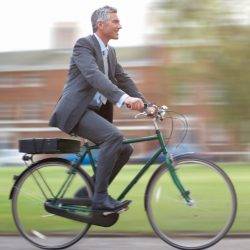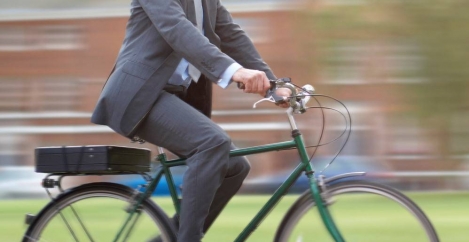July 14, 2017
The provision of cycling facilities in offices is failing to meet a growing demand
 The quality of the cycling facilities being offered by many workplaces are currently falling short and risk undermining a Government drive to increase the number of people cycling to work; as according to new research published by the British Council for Offices, 16 percent of office workers claim that inadequate facilities are discouraging them from considering commuting by bike. In April, the Department for Transport stated an aim to double the number of cycling stages, defined as a change in the form of transport as part of a longer “trip” (e.g. cycling to the train station before catching a train to work), from 0.8 billion stages in 2013 to 1.6 billion in 2025. However, new research, commissioned by the British Council for Offices and carried out by Remit Consulting, finds that whilst 83 percent of workplaces in the UK offer some form of bike storage, less than half (47 percent) of this is covered and secure. Improved parking facilities could help increase numbers of those cycling to work, with 16 percent of office workers surveyed saying that better bike storage would encourage them to do so.
The quality of the cycling facilities being offered by many workplaces are currently falling short and risk undermining a Government drive to increase the number of people cycling to work; as according to new research published by the British Council for Offices, 16 percent of office workers claim that inadequate facilities are discouraging them from considering commuting by bike. In April, the Department for Transport stated an aim to double the number of cycling stages, defined as a change in the form of transport as part of a longer “trip” (e.g. cycling to the train station before catching a train to work), from 0.8 billion stages in 2013 to 1.6 billion in 2025. However, new research, commissioned by the British Council for Offices and carried out by Remit Consulting, finds that whilst 83 percent of workplaces in the UK offer some form of bike storage, less than half (47 percent) of this is covered and secure. Improved parking facilities could help increase numbers of those cycling to work, with 16 percent of office workers surveyed saying that better bike storage would encourage them to do so.
Many workplaces are also failing to provide other basic facilities for cyclists. According to the research, just under half (45 percent) of offices do not have showers, something which almost a quarter (24 percent) of those workers surveyed said would encourage them to consider commuting by bike.
Overall, almost two fifths (38 percent) of office workers surveyed said that they would consider commuting to work by bike if their workplace had better or more facilities, demonstrating a clear need for UK businesses to cater to cyclists.
Commenting on the report’s findings, Neil Webster, Director, Remit Consulting, says: “As cycling continues to rise in popularity, ostensibly the most pressing issue for businesses will be finding the space for bikes, lockers and storage. However, our research shows that the focus needs to be on the quality of the facilities offered, not just the quantity.
Alongside safe storage and showers, there is a clear demand for towels, hairdryers and complimentary toiletries. This kind of service provision may not just encourage existing employees to cycle to work, it could also act as a market differentiator for prospective employees, and even have a positive impact on lettability.”
Richard Kauntze, Chief Executive of the British Council for Offices, added: “One of the key findings of the research is that, compared to five years ago, cycling provision is increasingly becoming accepted as an integral component of Grade A office specification.
As cycling continues to grow in popularity, workplaces now need to provide facilities which can cope with rising demand, and technology is likely to play a significant role in addressing this. Rather than permanently allocating parking spaces and lockers to individuals, mobile apps could enable cyclists to flexibly reserve them only when needed.
UK businesses must also ensure that their service provision for cyclists meets the evolving expectations of today’s worker. In the same way that reception spaces in a number of office buildings are beginning to resemble concierge desks, showering and changing facilities are taking inspiration from high-end gyms. To encourage more employees to cycle to work, this level of attention to detail will be as important as the providing the basics.”
The report also finds that:
- Over a third of those (35 percent) surveyed had taken up cycling to work in the past two years, with 31 percent having done so between two and five years ago
- Of those surveyed that do cycle to work, 71 percent do so for health, 62 percent for enjoyment and 51 percent because it is a cheaper form of transport. 20 percent do so because cycling to work offers “thinking time”
- Just 16 percent cycle to work every working day, while 23 percent do so once a week
- Commuting by bike was found to be much more popular among men, with over double the number of men cycling to work compared to women
- As well as insufficient facilities, reasons given by respondents who currently do not cycle to work include dangerous roads (35 percent), poor cycling routes (21 percent) and length of commute (40 percent)
- 29 percent of people would be encouraged to cycle if there were safer routes
- One in 10 workplaces offer no cycling provision at all
For more information visit the BCO website (www.bco.org.uk).














